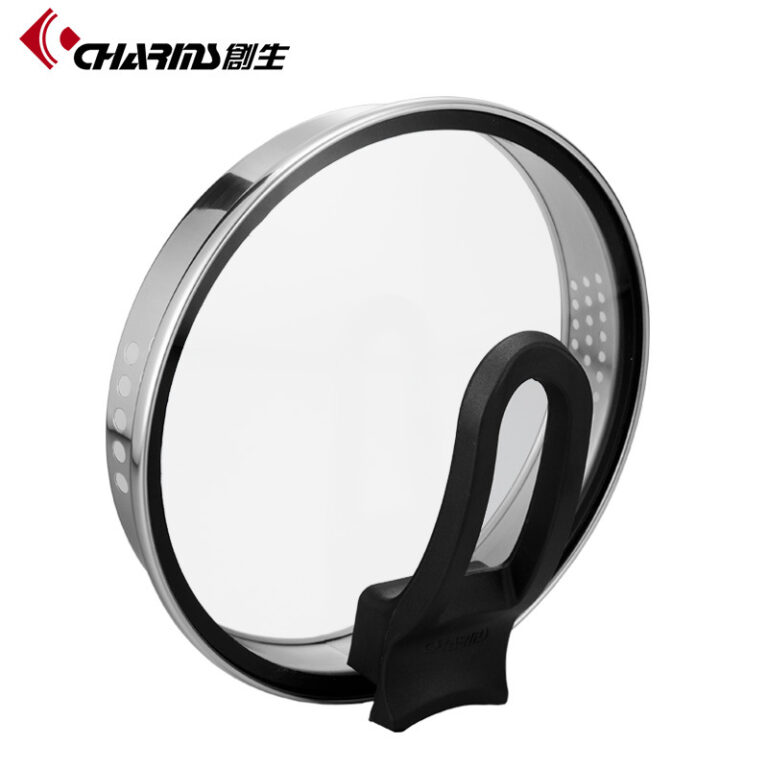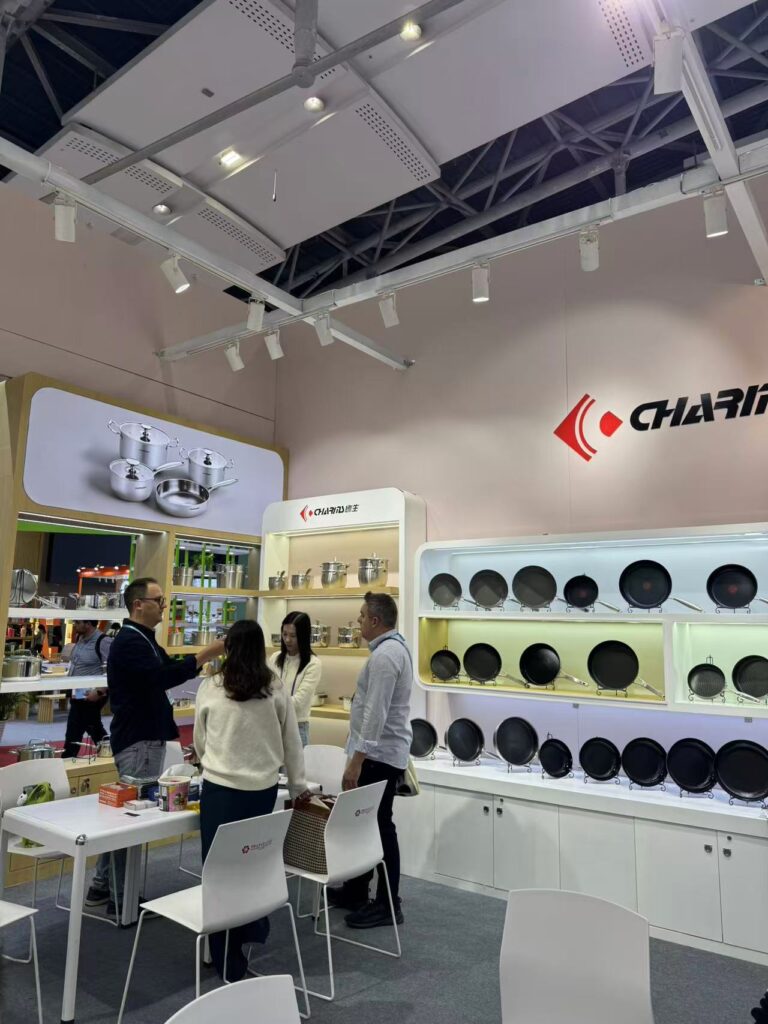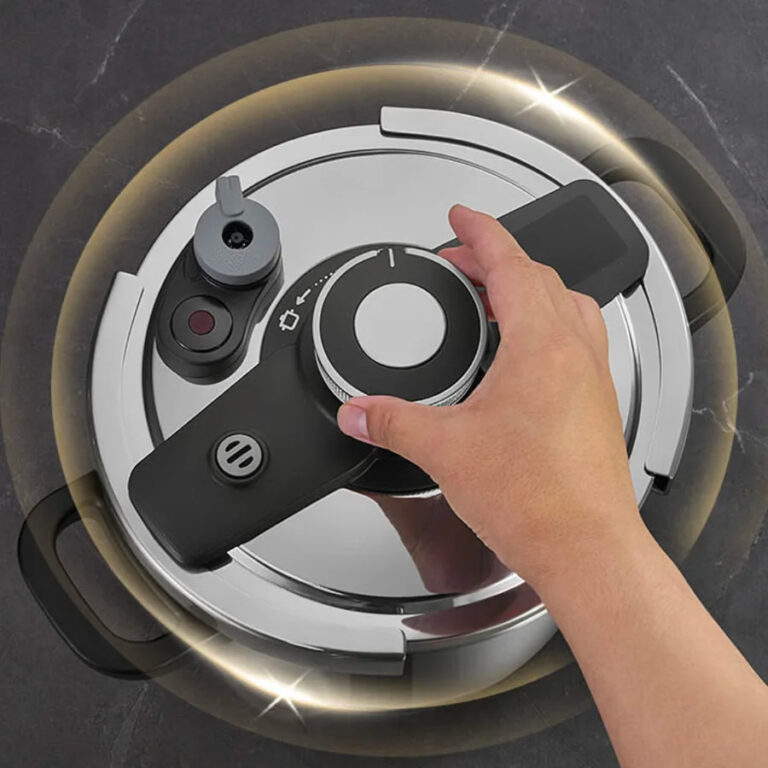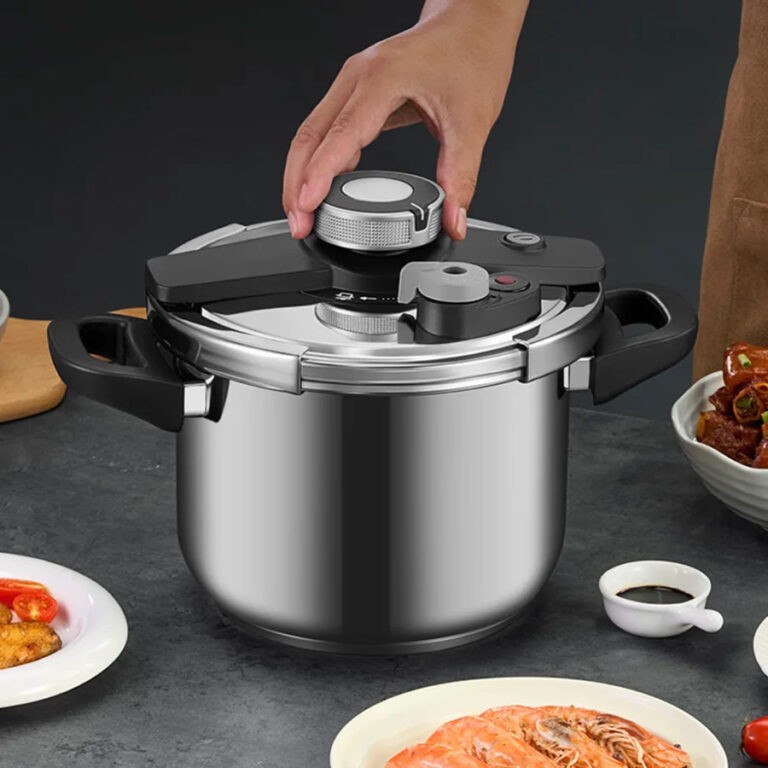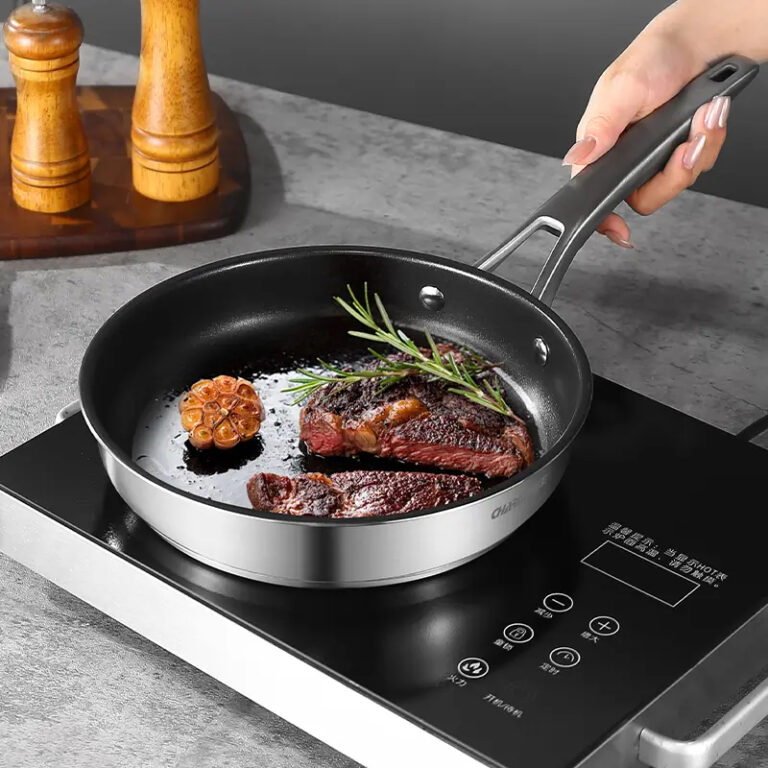In the culinary profession, cookware is not merely used for cooking food; it directly affects the taste, safety, and efficiency of the kitchen. When you are choosing between stainless steel and non-stick pans, it is not merely a matter of personal preference. You also need to understand the performance and service life of these materials and how they can meet the demands of health and lifestyle.
In this article, based on my years of professional experience in cookware manufacturing and extensive cooperation with leading global brands, I will clearly and accurately analyze the key differences between them to better help you make the most correct choice!
Table of Contents
Toggle1. Cooking Performance
Stainless steel cookware is popular because it can withstand high-temperature cooking, such as frying, frying until golden brown, and reducing the sauce. It can form a beautiful, crispy crust on the surface of meat, allowing chefs to use the remaining residue to make a rich sauce. On the other hand, non-stick pans are good at cooking delicate foods such as eggs, pancakes, or fish without sticking to the pan.
The main difference between them lies in their operability. Stainless steel POTS require mastering the skills of heat control, preheating, and oil usage. Non-stick pans, on the other hand, are easier to handle and are especially suitable for beginners or users who value convenience. In professional or semi-professional Settings, stainless steel POTS are widely used, while non-stick POTS can easily handle simple operations.
2. Durability
This is a problem that most people would pay attention to, and stainless steel cookware is almost unrivaled. As long as you take proper care of it, it can be used for decades, with almost no wear and tear except for natural fading. However, the service life of non-stick cookware is limited. Even with high-quality coatings, non-stick surfaces will gradually deteriorate over time due to the influence of high temperatures, appliances, or cleaning methods.
In industrial production, this difference in durability is obvious. The sturdiness of stainless steel makes it a long-term investment, while non-stick pans are usually regarded as consumables and need to be replaced regularly.
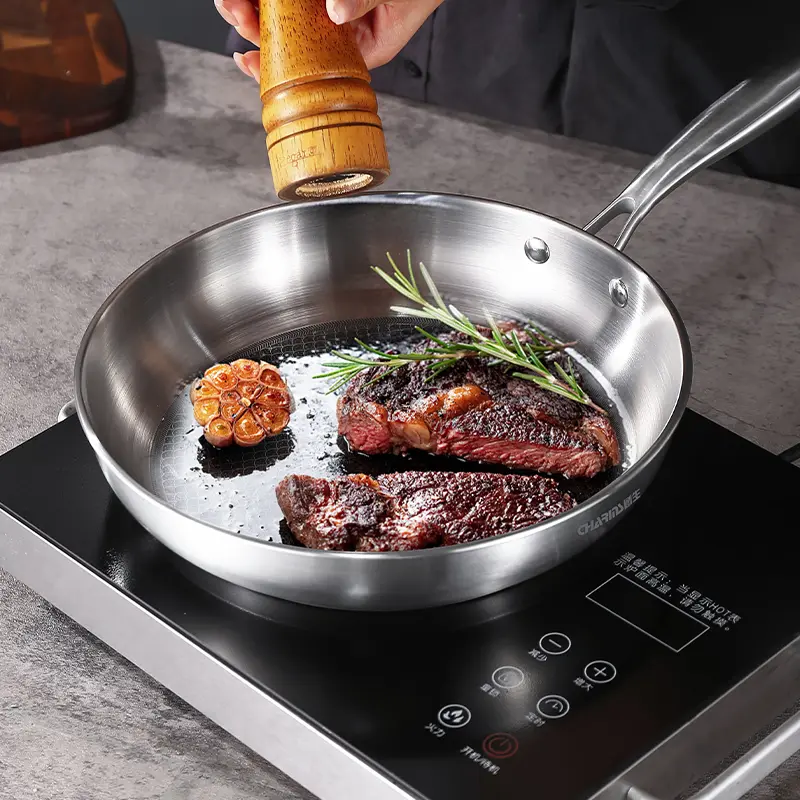
3. Health and Safety
Food safety is the top priority for every manufacturer and consumer. Stainless steel is inert – it does not react with acidic foods such as tomatoes or vinegar, nor does it release harmful substances at high temperatures. Non-stick coatings, especially modern ones without PFOA, are safe for daily use but must be handled with care. Overheating of non-stick pans (above 260°C/500°F) can cause the coating to degrade and may release smoke or particles.
From a health perspective, stainless steel can be reassuring under any cooking conditions. Non-stick pans are safe as long as they are used correctly, but users need to abide by temperature limits and avoid using metal utensils.
4. Ease of Cleaning
Did you know? This is the highlight of non-stick pans. Its smooth surface allows food to slide down effortlessly, and usually, you just need to rinse it quickly. In contrast, the requirements for stainless steel are higher. Burnt food or oil residue may adhere to the surface, and you need to scrub or soak it. However, stainless steel is safe in dishwashers and resistant to corrosive detergents, while non-stick ones should usually be hand-washed to maintain their coating.
Easy cleaning often reflects the demands of lifestyle. For those who seek convenience, non-stick pans are very attractive. For professionals or heavy users, the ability of stainless steel to withstand more rigorous cleaning methods is more practical.
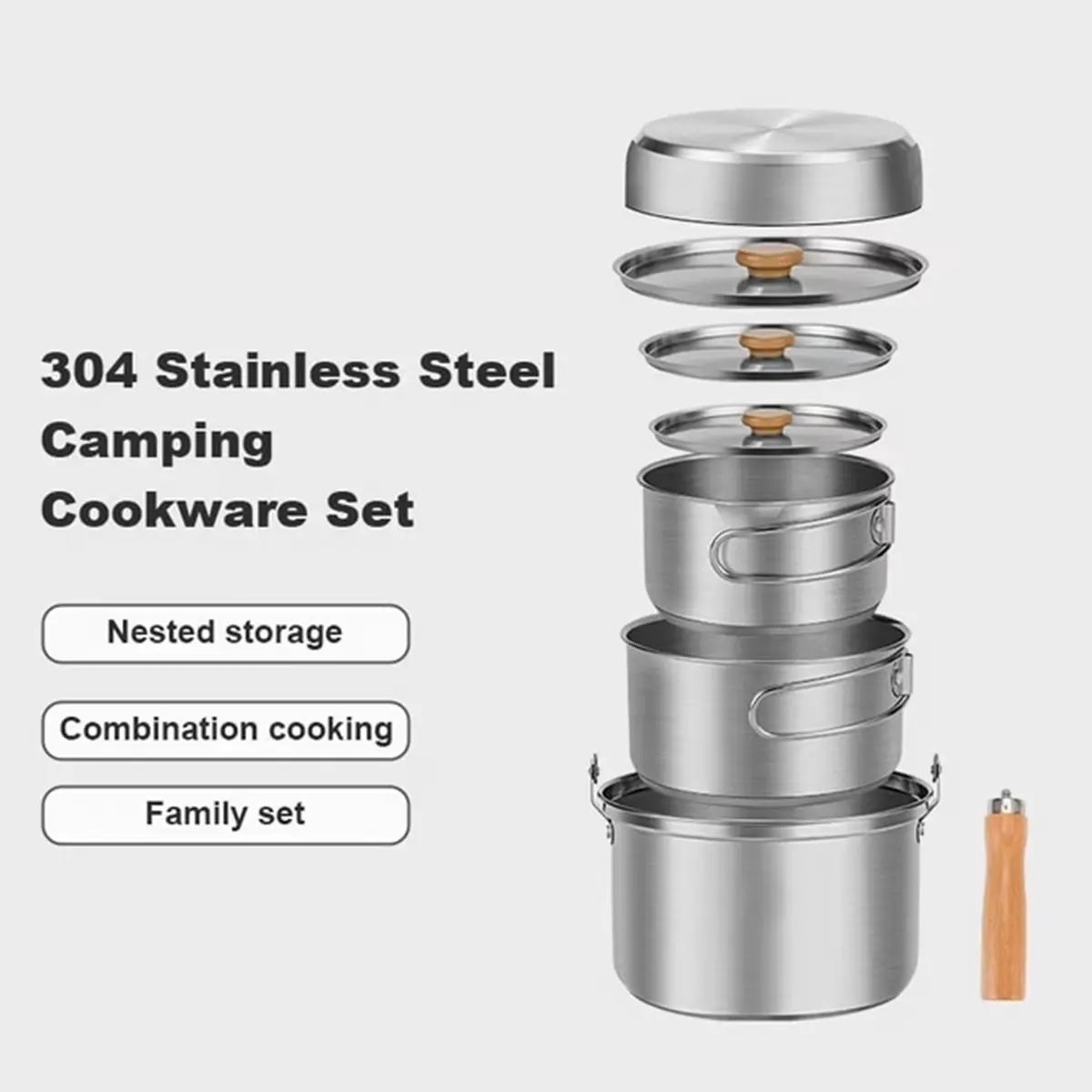
5. Heating Characteristics
Stainless steel itself has poor thermal conductivity. Therefore, most high-quality stainless steel cookware adopts a multi-layer structure, usually with an aluminum or copper core to ensure uniform heating. This layered design can eliminate hotspots and provide a consistent cooking effect.
Non-stick pans usually have aluminum bottoms, which have good heat conduction performance. This means it heats up quickly and evenly, but the heat preservation time may not be as long as that of multi-layer stainless steel POTS. For cooking that requires quick response, non-stick pans are a good choice. When it comes to grilling or cooking that maintains a stable heat, stainless steel is even more outstanding.
6. Oil Usage
One of the biggest advantages of non-stick cookware is its ability to cook with minimal oil. A small amount is often enough to prevent sticking, making it attractive for health-conscious cooking. Stainless steel generally requires more oil or fat to prevent food from adhering, especially with proteins.
That said, skilled chefs often embrace this characteristic of stainless steel. The oil not only prevents sticking but also enhances flavor and texture. In contrast, non-stick is designed for efficiency and lighter cooking styles.
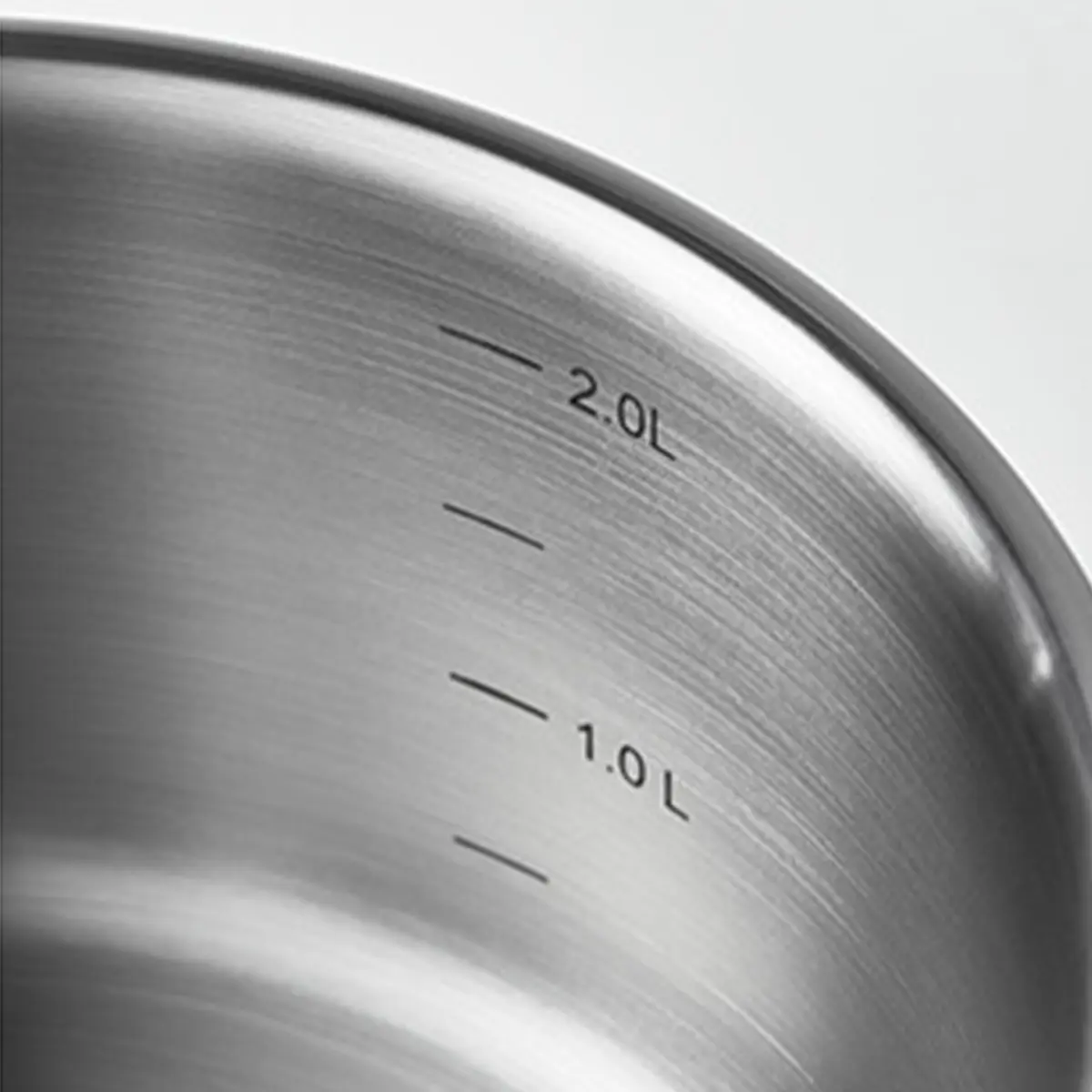
7. Weight
Weight is another practical factor. Stainless steel cookware tends to be heavier, especially when made with multi-ply construction. This solid build contributes to its durability but can make it less convenient for quick handling.
Non-stick cookware is typically lighter, thanks to its aluminum base. This makes it easier to maneuver, particularly for those who prefer lighter tools in the kitchen. However, the lighter build also means less heat retention compared to stainless steel.
8. Appearance and Texture
Stainless steel offers a polished, professional look that many associate with high-end kitchens. Its reflective finish adds a sense of quality and permanence, while the tactile weight reinforces its premium feel. Non-stick cookware often has a more understated matte or dark finish, which hides stains and wear but lacks the same professional presence.
For presentation, stainless steel often stands out. For practicality, non-stick’s simplicity and ease of care are appealing. Both serve different aesthetic and functional roles, depending on the user’s priorities.
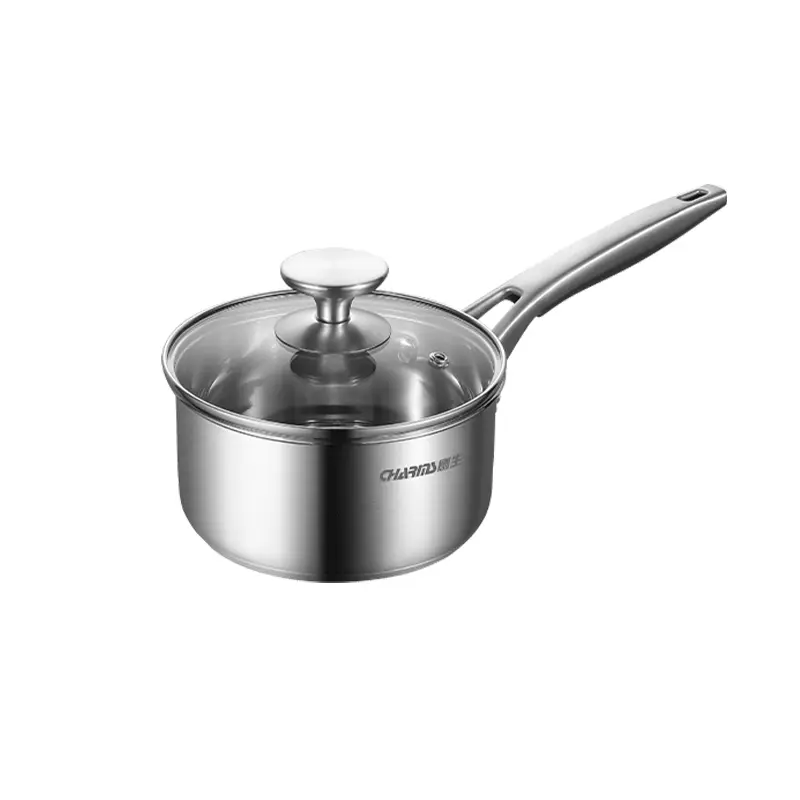
9. Conclusion
When you are choosing between stainless steel and non-stick pans, it is not about which one is better overall, but which one is more suitable for the user’s cooking style, usage frequency and health considerations. Stainless steel features durability, versatility, and high-temperature safety. Non-stick pans are easy, convenient and efficient, especially suitable for low-oil or fine cooking.
Charms Cook is a Chinese manufacturer of stainless steel cookware, with a 40,000-square-meter factory and over 300 automated production lines, achieving an annual output of 10,000 tons. It aims to bridge the gap by producing high-performance cookware that meets diverse demands. They have a strict ISO quality system and hold over 50 patents to ensure the reliability and innovation of their products.
If you are looking for stainless steel cookware, please explore our website!
Finally, here is a list of the top ten cookware manufacturers in China


